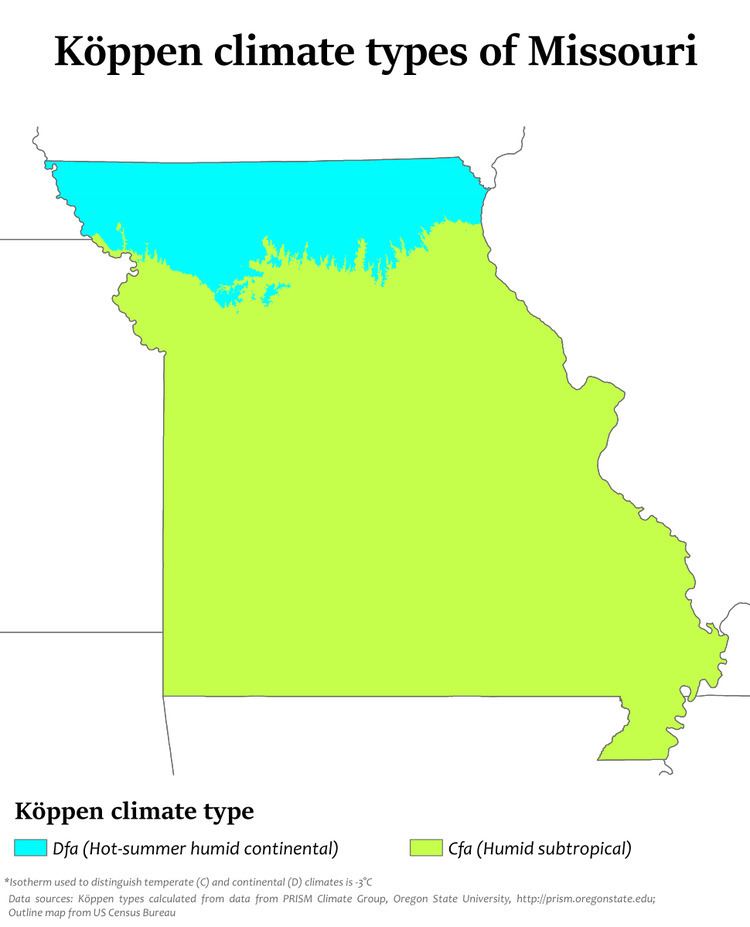 | ||
Missouri generally has a humid continental climate (Köppen climate classification Dfa), with cool to cold winters and long, hot summers. In the southern part of the state, particularly in the Bootheel, the climate borders on a humid subtropical climate (Köppen Cfa). Because of its location in the interior United States, Missouri often experiences extremes in temperatures. Lacking either large mountains or oceans nearby to moderate its temperature, its climate is alternately influenced by air from the cold Arctic and the hot and humid Gulf of Mexico.
Contents
Overview
While the adjacent table would suggest a very mild climate, a temperature fluctuation of 20 degrees Fahrenheit on average and 30 to 40 degrees Fahrenheit (17 to 22 degrees Celsius) in a twenty-four-hour period is common. Although the mean temperature for June and July is only 73 °F and 76 °F (23 °C and 24 °C) it is not uncommon for the temperature to reach 100 °F (38 °C) at least three concurrent days each week in these months, as it did in 1904 during the World Fair where the temperature in St. Louis, Missouri was 103 °F (39 °C).
Spring
March through May is generally the wettest season of the year, with the mean temperature from 1895 until 2003 being about 12 °C (54 °F) and its mean precipitation (in the form of rain) for this period being approximately 300 mm (12 inches). The spring rains often continue through June. The spring also produces the most tornadoes, with an average of 35 tornadoes each year.
Summer
Summer, June through August, is the hottest time of the year with a mean temperature of 24 °C (75 °F) and a mean precipitation of 300 mm (12 inches) with June having more precipitation than either July or August. The extreme highs for the year often occur in July or August. Tropical cyclones and their remains can impact the state during this time of the year, contributing to area rainfall.
Autumn
Fall, September through November, has less and less precipitation towards the end of the season. The mean temperatures for this season are 13.6 °C (56.5 °F) and the mean precipitation is 250mm (10 in). Tropical cyclones and their remains can impact the state into October, contributing to area rainfall.
Winter
Winters in Missouri can be long with temperatures ranging from mildly to bitterly cold. Kansas City's average January low is 26 °F (−3 °C) and St. Louis's average January low is 29 °F (−2 °C). The coldest temperature ever recorded in Missouri was −40 °F (−40 °C), set at Warsaw on 13 February 1905. Winter also tends to be the driest season, but typically yields significant amounts of winter precipitation. Snowfall averages 20 inches (51 cm) in the state's northern region, and 10 inches (25 cm) in the southeast. During the winter, northwest winds prevail; the air movement is largely from the south and southeast during the rest of the year.
